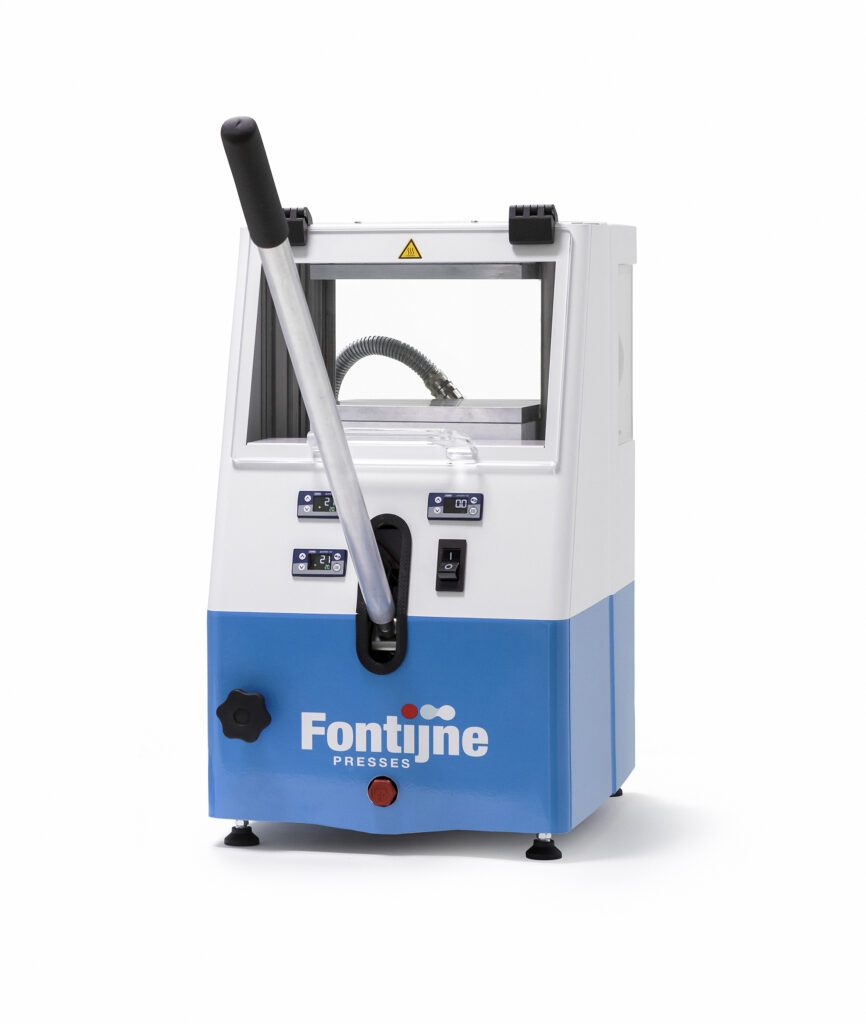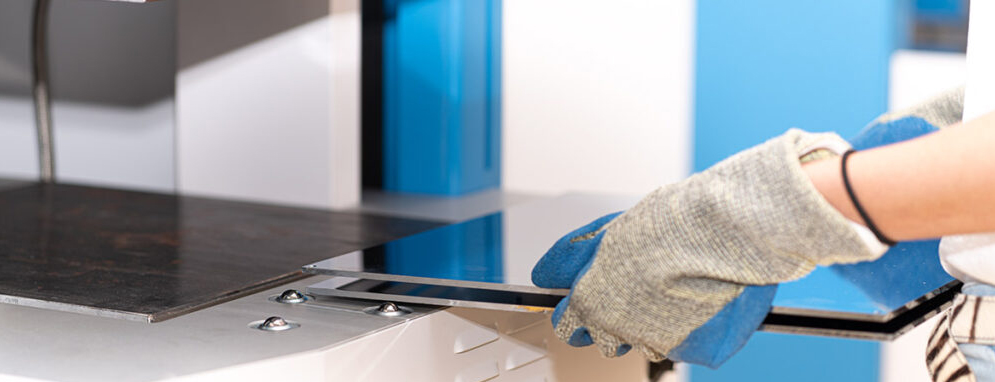QA Interview: how to get the most value of LabManual 50
For this week’s blog, we have interviewed Luc Pattyn – Sales and Marketing Director at Fontijne Presses about the newly introduced LabManual 50. By answering a couple of questions, Luc Pattyn (LP) provides valuable insights about the technical characteristics and unique selling points of this manual laboratory press, as well as its added value for the Fontijne Presses customers.
Fontijne Presses has recently expanded its LabManual range to include the LabManual50. Why was this addition made?
LP: The decision to expand the range was made thanks to the success of the other manually operated press, the LabManual 300. Our customers know us mainly because of the automatically operated hydraulic laboratory hot platen presses series LabEcon and LabPro.
We already had a manual press in our range of products in the past, and in 2019 we relaunched this type with a new look and feel. After the market introduction, several Fontijne Presses users asked if we could build an even smaller manually operated press. This shows our continuous commitment to helping our customers even better with every new product we develop.
 Fontijne Presses’ laboratory platen press LabManual 50
Fontijne Presses’ laboratory platen press LabManual 50
What applications is the LabManual 50 used for?
LP: Of course, our customers do not always inform us what exactly the press is needed for, but we know some applications like pressing thin films – 0,1 to 0,3mm – of PP and PB1 materials for FTIR analysis in order to determine the C2/C3/C4 contents. Moreover, PB1 reactor samples can be prepared for FTIR analysis and MFR analysis: samples need to be pressed multiple times in order to obtain a homogenous material or to get rid of moisture. Quick and easy testing is essential, and this press closes in only 5 strokes.
For the rubber industry the press can be used to vulcanize, also according to the norm ASTM3182: the required 3,5 MPa is reached with the maximum closing force of 50 kN on a specific surface of 120 x 120mm. The press is used as well for instance in the recycling industry to produce the so-called dogbones.
With other presses of Fontijne Presses, certain specs can often be adjusted according to the customer’s wishes. Is this also possible for the LabManual 50?
LP: In order to be able to reach the budget-friendly price, we decided to look only at the strict minimum needed specs: a maximum temperature of 200°C, a closing force range of 1 up to 50 kN, a platen size of 200 x 200mm, and a daylight opening of 150mm. Contrary to most of our other presses, there are no other options.
No other platen sizes, no other daylight openings, not even cooling.
The LabManual 300 has a bigger closing force range, has larger plates, and can handle higher temperatures. So why choose the LabManual50?
LP: Simply because you don’t always need to work with the specs of a LabManual 300. For certain applications and samples, the temperature, closing force and platen size of the LabManual 50 are more than sufficient. So why spend more money then?
How does the LabManual50 differ from similar laboratory platen presses from other manufacturers?
LP: First of all, we work with an integrated hydraulic system instead of a car jack: the massive dedicated hydraulic cylinder including guiding rings, seals, and dirt wipers, ensures that not only axial but also radial loads can be handled easily. The safety circuit allows working with high closing forces and protects the system and the user against overpressure. Secondly, the digital controls and read-outs allow a very precise operation, with increments of 1°C or 1 kN.
Thirdly, the special design of the platen press guarantees that the parallelism between the upper and the lower heating platen is under all conditions – hot or cold, no pressure of full pressure – below 0,1mm. Moreover, the opening between the two platens equals the cylinder stroke, so you can always close the press fully.
Thanks to its small footprint of 450 x 350, the low weight of 70kg, and a voltage of 230V, the LabManual 50 can easily get installed in any lab! Of course, this press has no restrictions on safety and comes with a CE certificate.
How does the press operate, what does the operator have to do to prepare the specimen?
LP: The press is designed as a stand-alone unit and is suitable for bench mounting. It should be installed on a solid lab table. After entering the temperature setpoint for the upper and the lower platen, the platen will start heating up electrically. The digital temperature controllers show the actual value and the setpoint. The PID control ensures a continuously modulated control by means of accurate and responsive correction and avoids a temperature overshoot.
The operator opens the safety door, inserts the product in the middle of the lower heating platen, and closes the door afterward.
The pump handle is used to pump the lower heating platen upwards (make sure the pressure relief valve is closed), until the lower heating platen touches the upper heating platen. This goes quickly, in 5 strokes the press closes. Continuing to pump results in building up pressure – which can be read out on the display – until the desired pressure is obtained, or until the maximum pressure of the press is reached. Lowering the press force and opening the press can be done by means of a pressure relief valve. Open the safety door to remove the product, and the job is done.
Manual presses such as the LabManual50 are intended for situations in which only a limited number of samples need to be prepared. From which amount of samples is a motorised press (LabEcon series) a better choice?
LP: That is difficult to say. Indeed if you only need a couple of specimens per day or the press is only used every 2 weeks, a manual press can be an interesting alternative. If you require a bigger output and the press is daily and constantly in use, you should opt for an automated press.
That’s why we see these manually operated presses also as a useful addition to the automated press, as a kind of backup press for certain tasks in order not to interrupt the big output cycles on the automated press.

